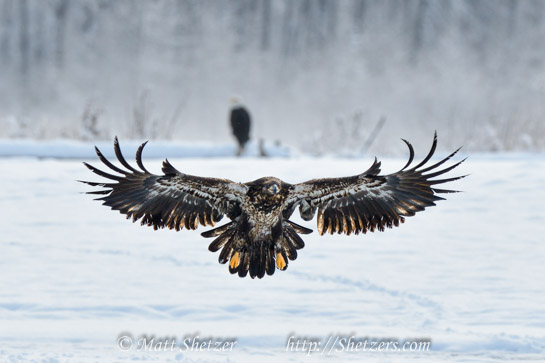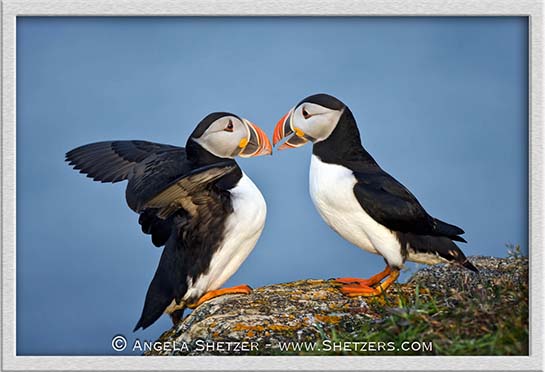We get this question at least once a week, so I thought I’d address it and post our thoughts on picking a camera.
There is a reason why so many cameras are made by each manufacturer. They are made for different purposes, so what we need to figure out is what are YOUR needs.
Lets break this down:
Action Photography\Birds in flight – So you are looking for that great image of a bird in flight, or a sporting event. You will need a camera with a high frames per second (FPS). Normally, to achieve fast FPS the image size (megapixels) will be smaller than that of a landscape shooter as the camera need to store the images quickly. Also, your auto-focus is critical to track the moving subjects.
Low Light – For those of you who love Alaska like Matt does, you know that it is not always sunny there, and some days can be very dark. If you are looking for good action, in low light, you will need to push your ISO. Some cameras, especially the full frame cameras handle higher ISO than others. Check out some of the comparisons on the web. Think of those fast action\indoor sporting events, or dimly lit musical concerts too.
A dark day in Alaska with ISO 1600 raised to produce a high shutter speed to freeze the feathers.

Landscapes – Good news is that landscapes don’t move very fast, therefore we don’t need the high frames per second, nor high ISO. We normally print landscapes larger than other photos, so this is where the high mega-pixels cameras come in.
Portrait Photography – You are in control of the setup, and can control the light. You don’t need high FPS or high ISO. How many megapixels do you need? Are you printing large prints (bigger is better), or just emailing and posting photos on the web (small)?
Fit – Make sure the camera fits in your hands nicely and you can reach the buttons. Those with small hands will want a smaller body than some of the large pro models. Also, those who like to carry their camera all day in a bag might prefer a smaller/lighter body.
Budget – You know I had to bring this up. Plan your budget, and stick to it. One of the big mistakes is to spend all your money on a camera body, and not quality lenses, extra batteries, memory cards, tripod, etc.
Ok, here is what we use and why: (We are Nikon customers, Canon makes equivalent models)
Matt loves Bald Eagle photography (fast action) in Alaska (dark in November), therefore his favorite cameras are a Nikon D4 and a Nikon D300. The D4 allows 9 fps and can shoot very clean images at ISOs as high at 3,000. The D300 doesn’t do as well at high ISO (maximum for good quality is 800), but the sensor has a 1.5 crop, so his 500mm lens has an effective reach of 750mm so those eagles are full frame when it is bright out.
Angela prefers landscape scenes, and loves large prints. She has been shooting a Nikon D7000 and will be upgrading to a Nikon D800 (36 megapixel), or Nikon D7100 (24 megapixel) shortly as frames per second are not as important for her. She has small hands, therefore prefers the smaller bodies. One of her passions in photography is the cute little Puffins. These are small birds, so she takes her camera with a 1.5 crop to get a little more reach to fill the frame.
Angela using her D7000 with 1.5 crop to capture this cute interaction of two puffins.
So before you go to the camera store, think of the following
· What did I take photographs of the last year, and what are my plans this year
· How big do I want to print my images?
· What is the use of my images (Print/Web/Email/Stock)?
· Where am I shooting? How bright is it?
· What is my budget?
There are many organizations that rent camera bodies. This is a great way to test and make sure a camera is right for you. Our local camera shop also offers a 7 day return policy, so we are able to test the camera to make sure it meets our needs. Ask if your shop offers this.
